INDIAN ARMED FORCES CHIEFS ON OUR RELENTLESS AND FOCUSED PUBLISHING EFFORTS

The insightful articles, inspiring narrations and analytical perspectives presented by the Editorial Team, establish an alluring connect with the reader. My compliments and best wishes to SP Guide Publications.

"Over the past 60 years, the growth of SP Guide Publications has mirrored the rising stature of Indian Navy. Its well-researched and informative magazines on Defence and Aerospace sector have served to shape an educated opinion of our military personnel, policy makers and the public alike. I wish SP's Publication team continued success, fair winds and following seas in all future endeavour!"

Since, its inception in 1964, SP Guide Publications has consistently demonstrated commitment to high-quality journalism in the aerospace and defence sectors, earning a well-deserved reputation as Asia's largest media house in this domain. I wish SP Guide Publications continued success in its pursuit of excellence.
- Operation Sindoor: Resolute yet Restrained
- India’s Operation Sindoor Sends a Clear Message to Terror and the World – ‘ZERO TOLERANCE’
- Japan and India set forth a defence cooperation consultancy framework, talks on tank and jet engines
- Terrorist Attack in Pahalgam in Kashmir: Unfolding a long surgical war against PAK
- Lt General Pratik Sharma takes over Command of Indian Army's Northern Command
Boosting Air Defence Network
Indian Armed Forces are overhauling their vintage air defence mechanism aiming to enhance the effectiveness of existing systems, advanced missiles, jammers and radars and induct new anti-aircraft systems
 |
The Author is Former Director General of Information Systems and A Special Forces Veteran, Indian Army |
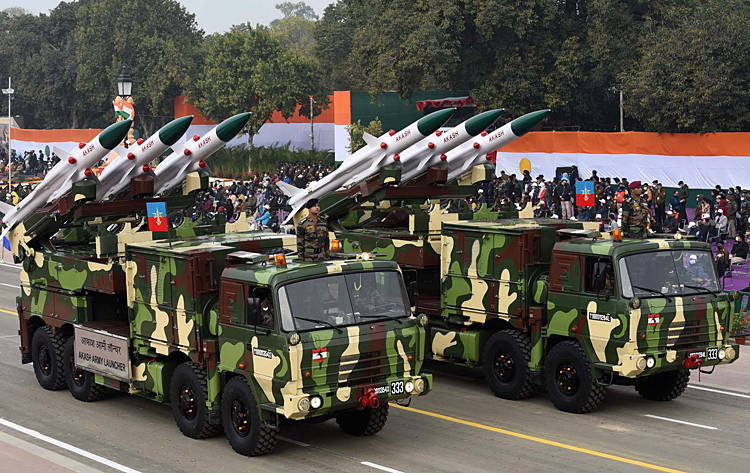
Army Air Defence (AAD) forces will always play an integral role in any conflict. These forces are critically required to persistently protect a nation's security, including the infrastructure it relies on. As threats have evolved throughout the decades, AAD forces have undergone several modernisation efforts in order to continue providing critical protection against the proliferated modern threats. With hundreds of drones changing the battlefield dynamics, as being witnessed in the war in Ukraine, in recent conflicts, the Indian Army is overhauling its vintage air defence mechanism aiming to have new anti-aircraft guns to shoot down the UAVs and development of specialised fragmentation ammunition designed to enhance the effectiveness of existing systems, advanced missiles, jammers and radars. The first trials of two indigenous anti-aircraft weapons to replace the ageing L-70 guns is scheduled to be carried out in July this year while an RFI has been issued to buy nine direct energy weapons.
The Indian Army's Air Defence units are tasked with securing airspace below 5,000 feet, focusing on critical infrastructure and urban areas
The initiative includes the following:
- New Anti-Aircraft Guns – equipped with advanced target acquisition systems (including high-resolution electro-optical sensors and thermal imaging capabilities), automatic with rapid rate of fire (about 2,000 rounds per minute), proximity fuses enabling detonation when in specified distance from the target, mounted on mobile platforms. In addition, a significant upgrade of the existing L-70 guns is being done.
- Advanced Ammunition and Systems - acquiring fragmented ammunition, high-power microwave units, and SMART munitions. In addition is enhancing the radar capabilities with next-generation surveillance systems capable of detecting incoming UAVs.
- Integration of New Missile Systems - double-layered Ballistic Missile Defence (BMD) shield designed to protect India from ballistic missile attacks; designed to destroy incoming enemy missiles in the mid-course and terminal phase. Work is ongoing to develop systems that can destroy missiles during the boost phase.
The IAF's SAMAR (Surface to Air Missile for Assured Retaliation) is a short-range, quick-reaction surface-to-air missile system that utilises refurbished Vympel R-73 and R-27 air-to-air missiles
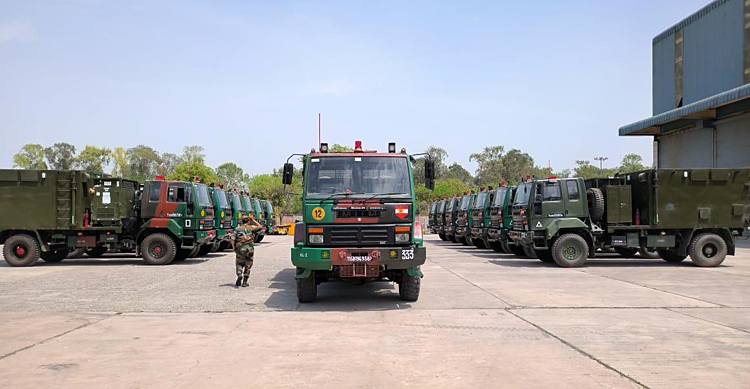
The Indian Army's air defence units are tasked with securing airspace below 5,000 feet, focusing on critical infrastructure and urban areas. Multiple weapon systems have been introduced, tested or are under development. These include: Prithvi Air Defence (PAD), Ashwin Advanced Air Defence (AAD), Swordfish Radar to intercept missiles with a range of up to 2,000 km, AD-1 and AD-2 missiles for intercepting missiles with a range of up to 5,000 km, Akash Air Defence System, Akashteer System, Barak-8 Surface to Air Missile (SAM), STARStreak Man-Portable Air Defence System. Ongoing projects aim to develop mobile air defence systems that can effectively counter threats from drones and loitering munitions while maintaining mobility alongside mechanised forces.
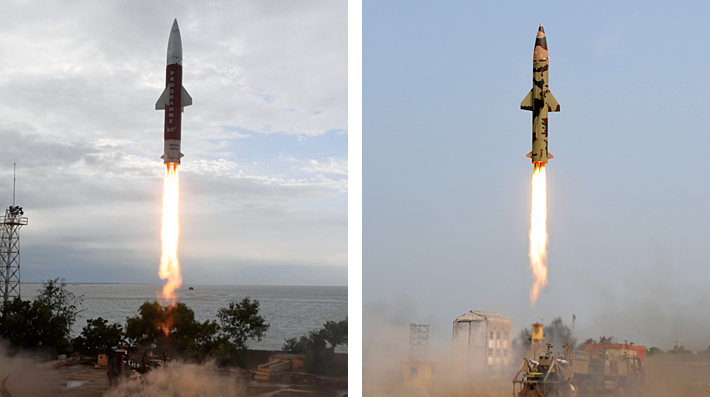
In addition to the above, reports of March 11, 2025 indicate that the DRDO is preparing a proposal to equip the Indian Army with a new indigenous Self-Propelled Air Defence Gun Missile System (ADGM-SP). The system is to be based on the chassis of the Light Zorawar Tank, jointly designed by the DRDO and Larsen & Toubro (L&T) specifically for high-altitude terrain, and designed to protect the Army's mechanised units (tanks and APCs) from a range of aerial threats. The proposed ADGM-SP combines a twin 30mm gun system with the Very Short-Range Air Defence System (VSHORAD), a portable missile system. This combination allows the ADGM-SP to effectively engage various aerial threats, including drones, helicopters and low-flying aircraft.
By integrating the BuK-M3 Viking' and Tor-M2U systems with the S-400, India can create a layered defence that addresses various threats, from long-range ballistic missiles to short-range precision-guided munitions
The IAF's SAMAR (Surface to Air Missile for Assured Retaliation) is a short-range, quick-reaction surface-to-air missile system that utilises refurbished Vympel R-73 and R-27 air-to-air missiles. The SAMAR system made its debut at Aero India 2023. The SAMAR-1 system has a 12-km range to take on low-flying aerial targets like fighter planes, helicopters and UAVs. In August 2024, reports confirmed that the SAMAR-2 variant (30 km range) is ready to be tested from December 2024. This was announced during Exercise 'Tarang Shakti' where the SAMAR-1 system was showcased.
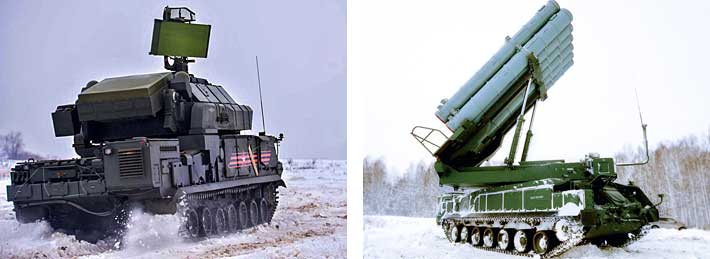
According to reports of March 11, 2025, Russia has offered the BuK-M3 Viking' and Tor-M2U systems to India, which would significantly bolster India's Air Defence Network. The BuK-M3 Viking is a medium-range air defence system, with the ability to track and engage up to 36 targets simultaneously and deploy more missiles per launcher. This system is particularly effective against specialised electronic attack and anti-radiation missiles, which are designed to neutralise long-range systems like the S-400.
In addition to the above, reports of March 11, 2025 indicate that the DRDO is preparing a proposal to equip the Indian Army with a new indigenous Self-Propelled Air Defence Gun Missile System (ADGM-SP)
The Tor-M2U system is a short-range air defence missile system designed to engage targets at low altitudes, including aircraft, helicopters, and precision-guided munitions. It is highly effective against guided bombs and missiles, providing critical protection to air defence installations. It can operate in challenging environments with minimal operator intervention. Integrating the BuK-M3 with the S-400 would create a robust defence perimeter, enhancing India's ability to counter a wide range of aerial threats.
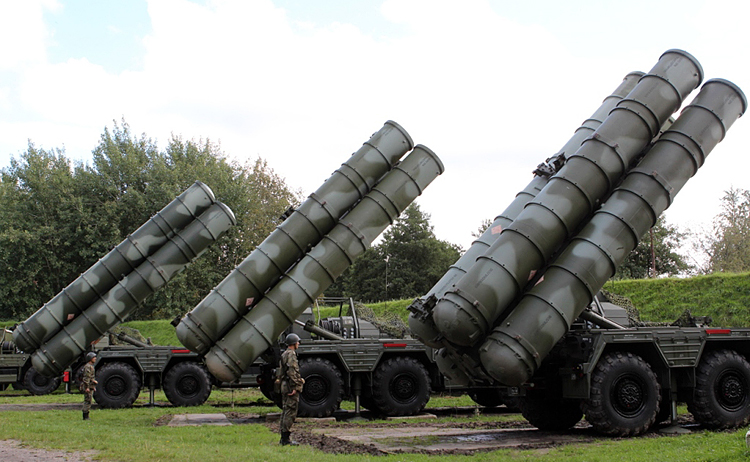
By integrating the BuK-M3 Viking' and Tor-M2U systems with the S-400, India can create a layered defence that addresses various threats, from long-range ballistic missiles to short-range precision-guided munitions. This aligns with India's goal of enhancing its air defence infrastructure while fostering local manufacturing capabilities through initiatives like 'Make in India'. Moreover, Russia is willing to engage in joint production and technology transfer; which makes it a cost-effective and technologically advanced solution for meeting India's defence requirements.





